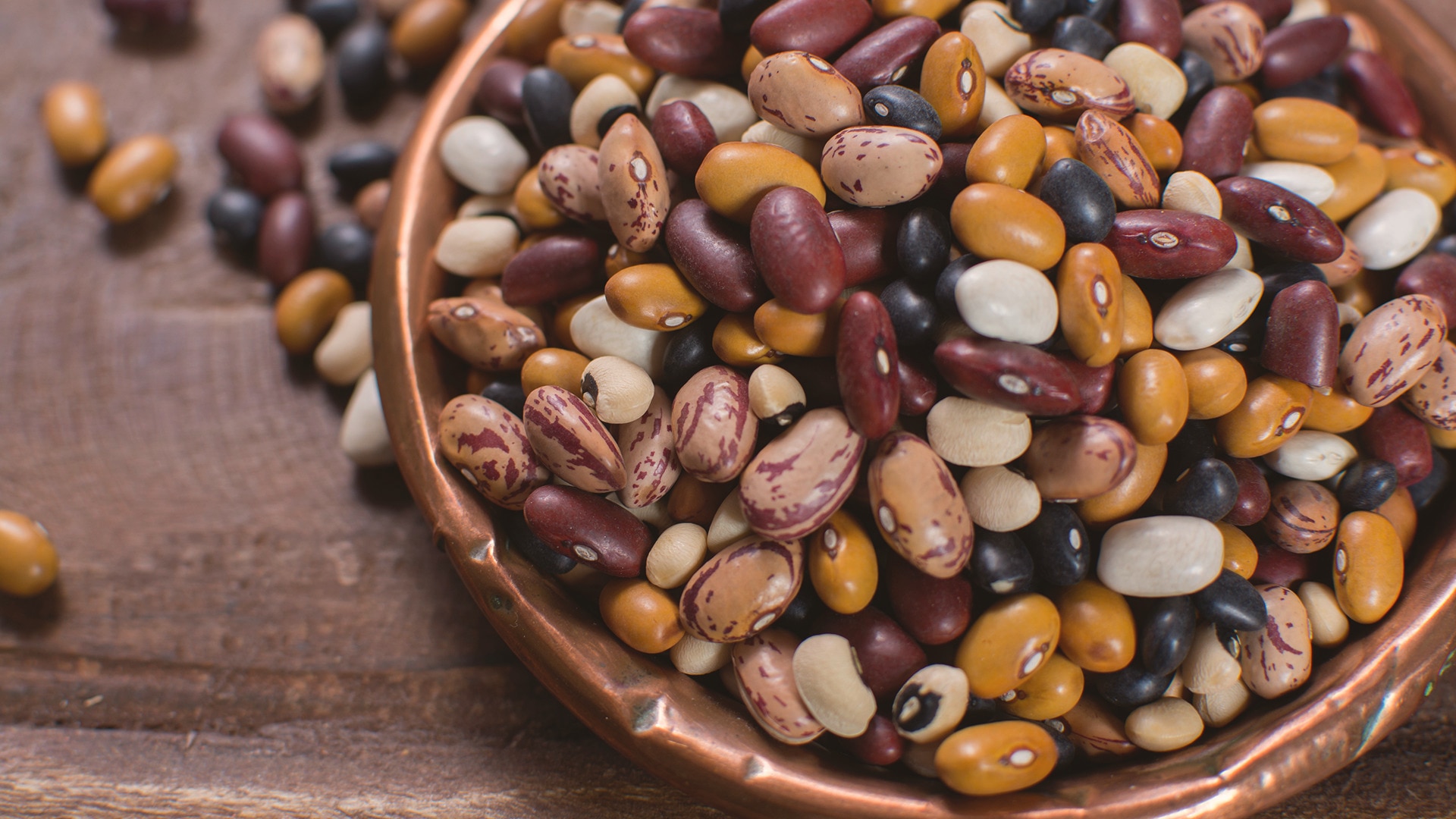Skip to:
As part of our Knorr Future 50 Foods initiative, we’ve rounded up 50 different vegetables, grains, cereals, seeds, legumes and nuts, from 11 unique categories. The one thing they all have in common? They’re packed with nutrients and help to encourage better agrobiodiversity.
Interested in learning more? Below, we’re breaking down the 11 different types of sustainable food groups featured in the list. Plus, we’ll be sharing how you can add these healthy food groups into your meals in exciting and delicious ways…
The 11 Future 50 Foods Categories Explained
From beans and pulses to edible algae, discover the 11 types of sustainable food groups in our Future 50 Foods report, below.
Algae
Perhaps you have encountered laver seaweed wrapped around your favorite sushi roll, but the first group may catch you by surprise if you aren’t familiar with cuisines that have traditionally cooked with algae, which range from Japanese to Welsh. These sea growing plants are critical for oxygen production and are rich in essential fatty acids, phytochemicals, and savoury umami flavour. Try topping your next salad with lightly fried wakame seaweed for a salty crunch.
Beans & Pulses
Did you know that Canada is one of the top global producers of pulses? If you want to learn about what the most sustainable foods are, beans and pulses have their own special property. These members of the legume family are a smart choice for farmers because they’re able to convert nitrogen in the soil in a way that helps other crops grow. Plus, it helps that they’re nutritious and delicious! Try swapping black turtle beans for ground beef in a stew or add lentils to your next burger mix for a sandwich packed with fibre and flavour.
Cacti
More than just cute home décor, the cactus has long been featured in Mexican cuisine. Nopales, or prickly pears, are drought resistant and provide vitamins (like vitamin C) and minerals such as magnesium, in addition to fibre. Use them to add fresh flavour to salads, smoothies, and more! Try adding nopales to your favourite salsa recipe.
Cereals & Grains
Grains are staple foods across the globe, but our global reliance on rice and wheat limits the nutrients we get with our carbohydrates and restricts food systems in a way that can be detrimental to the environment. Treat yourself to something new, like spelt or finger millet, both micronutrient-rich ancient grains with a nutty flavour that can take the place of rice. Wild rice, which is actually a seed, can be popped on the stove for a twist on popcorn.
Fruit Vegetables
You’ve been told to eat your fruits and vegetables, but what about your fruit vegetables? These are fruits that are generally mistaken for vegetables. Tomato is a familiar one, but try an orange tomato for a slightly sweeter flavour and up to twice as much Vitamin A. Try pairing them with okra, another fruit vegetable. Season and sauté okra and orange tomatoes in olive oil for a delicious side dish.
Leafy Greens
Talk about a nutritional powerhouse! Leafy greens deliver fibre, vitamins and minerals. Some, like spinach and kale, are already popular in salads and soups. Up your intake of those and keep the leafy green party going with mild, crunchy bok choy or peppery tasting watercress, or colour red cabbage.
Mushrooms
It’s not a party without a fungi! Add meaty texture and savoury taste to stews, pastas, stir-fries, and sauces with an earthy tasting maitake or nutty, rich saffron milk cap mushroom. Savour the flavour and reap the nutritional benefits of vitamins such as vitamin D, and minerals like Zinc.
Nuts & Seeds
Time to get nutty! While nuts and seeds feature throughout world cuisine, there are several underutilized varieties that can offer many nutritional, environmental, and flavourful benefits. Get your hands on hemp seeds, which can be added to sauces, salads, or baked goods for a boost of protein, fibre, and good fats (such as omega-3 polyunsaturated fatty acids). Sesame seeds, another Future 50 seed, can be toasted and added to any side dish for a fragrant crunch.
Root Vegetables
Great things happen underground! Root veggies grow deep in the earth and emerge hardy and nutritious for us to enjoy at a time when warmer weather crops are unavailable. Black salsify is one lesser-known example, and it offers potassium and Vitamin C, and a sweet, parsnip-like flavour. Try it roasted as a side dish or mashed in place of potatoes.
Sprouts
There are a variety of familiar foods that can double or triple in nutritional value when they are allowed to sprout before being eaten. For example, chickpeas are yummy and healthful, but when they are sprouted they become even crunchier and nuttier-tasting.
Tubers
Tubers are a valuable source of energy, but another category in which we do not take advantage of the huge variety available. Swap your usual sweet potato with ube, or purple yam (rich in anthocyanins), for a burst of colour. Look for lotus root to add a tangy crunch to your next stir-fry.

